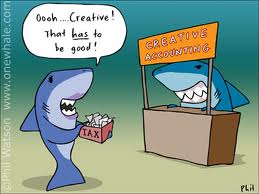Reinvention seems to be the buzzword of the season. With India’s Elections 2014 over, the need for reinvention has resurfaced with vigor. In light of the dismal performance in elections, some parties have dissolved different committees on grounds of non performance to rediscover winning ways. Questions have surfaced on whether political parties can reinvent themselves. Suggestions for restructuring the ministries to reduce multiplicity of government departments and bring about effective governance have been put forth for the new government by the specialists.
At this juncture, when people are expecting India to take on the path to economic recovery and international brokerages are betting high on India’s growth story, the time is apt for many institutions to start the process of reorganizing themselves. Needless to say the magnitude of efforts and change required will be humungous.
One of the essential elements in the process will be a shift from a reactive or inaction based approach to a ‘process based action oriented’ approach. That, in itself, is a challenging task as it requires a huge shift in the mindset at all levels – starting from the highest and percolating down the ranks; though a somewhat obvious statement, this is seldom spoken about. Nonetheless, a shift in mindset and approach is necessary to bring about even the small changes, or for that matter for plucking the ‘low hanging’ fruits.
The challenges are aplenty. In our society which places a premium on hierarchy and individual merit, following a process is not something that people eagerly look forward to. Not very infrequently, we see that people in the top rungs are considered above the processes that are meant to be followed by all. The perception that following processes undermine authority and impede creativity often translates into a reluctance for adherence to processes. Furthermore, there are many who tend to think of themselves as creative and smart by overriding processes, even in things as simple as having to pay a small fine for breach of traffic rules or by managing to get away without paying for services availed.
A process, by definition appears restrictive, even if necessary. We think of processes as bureaucratic routines that have to be adopted and adhered to. For reasons unknown these seem to be designed to slow down rather than facilitate the work. Unlike in a creative work, where a person derives intrinsic satisfaction from the work itself, there is no intrinsic motivation for following a process. Most of the times there is no appreciation either, because it is what a person is expected to do anyways.
All these put together result in the display of utter disregard for processes, at times, even in the highest institutions of the country, as was recently evident in the transition of PMOINdia twitter account. Needless to say it creates confusion and chaos, and the consequences are undesirable for all.
The importance of processes certainly cannot be undermined. As a matter of fact, the significance of having efficient processes in place cannot be emphasized enough.
Robust processes are needed in banks and financial institutions to detect & prevent fraud and manage risks. Businesses, as they grow, need to optimize different functions such as production, supply chain, customer service etc. Processes are implemented to bring about efficiency, ensure safety and quality, reduce wastage and pilferage, be consistent in dealings with customers or vendors and so forth. Any government needs to have efficient institutional processes to effectively implement their policies in a consistent manner.
Efficient processes bring about consistency in experiences, cut down ambiguity, fix accountability and ensure predictably in outcome. By following processes we can achieve desirable outcomes with optimal efforts, whereas the lack of processes can create uncertainty, discontent and dissatisfaction.
A structured approach towards process management entails designing processes keeping in mind the goals or the ‘To- Be’ state, charting out the ‘As Is’ state and finding out optimal changes needed to bridge the gap under different scenarios. Also taken into consideration are the different stakeholders and their oft-conflicting objectives, organization structures, the boundary conditions and the assumptions. The process once designed is revisited at a determined interval to accommodate any changes to the assumptions, structures or objectives. Change management is needed all along to secure buy in from all those who are impacted by the process.
Since the incentives for adhering to processes are not always very apparent, it is imperative to figure out ways to motivate and incentivize people to follow processes. This requires thorough communication from the highest levels so that people align with the vision and understand how they are contributing to the vision.
The challenge also lies in designing processes in a way that may allow people to express themselves creatively, while being in sync with the overall objectives and ensure that people do not get bogged down by bureaucratic procedures.
A case in point is the innovative campaigning process during the elections that unleashed creativity in people and triggered off a chain reaction by inspiring people to come up with all possible combinations of the ‘Ab Ki Baar..’ slogan. Of course such exceptional demonstration of creativity will not be possible for all processes, however with some effort processes can be made flexible to allow for individual expression of creativity to the extent possible.
It is, however, important to ensure that demonstration of creativity does not lead to deviation from the objectives of the process, impede the work of others or create conflicting outcomes. An example that readily comes to my mind is that of ‘creative accounting’- the term coined to refer to the practice of systematic misrepresentation of reported earnings and assets of companies through concealed irregularities in the accounting processes.
The renewed zest for reinventing winning ways serves as a reminder that it is time for our government and institutions to reorient to a process driven mindset and not let individual hubris defeat the overall purpose of the process.


No comments:
Post a Comment